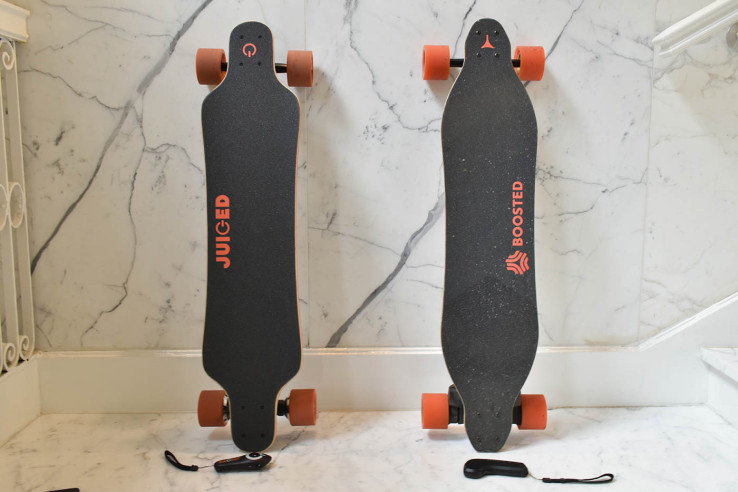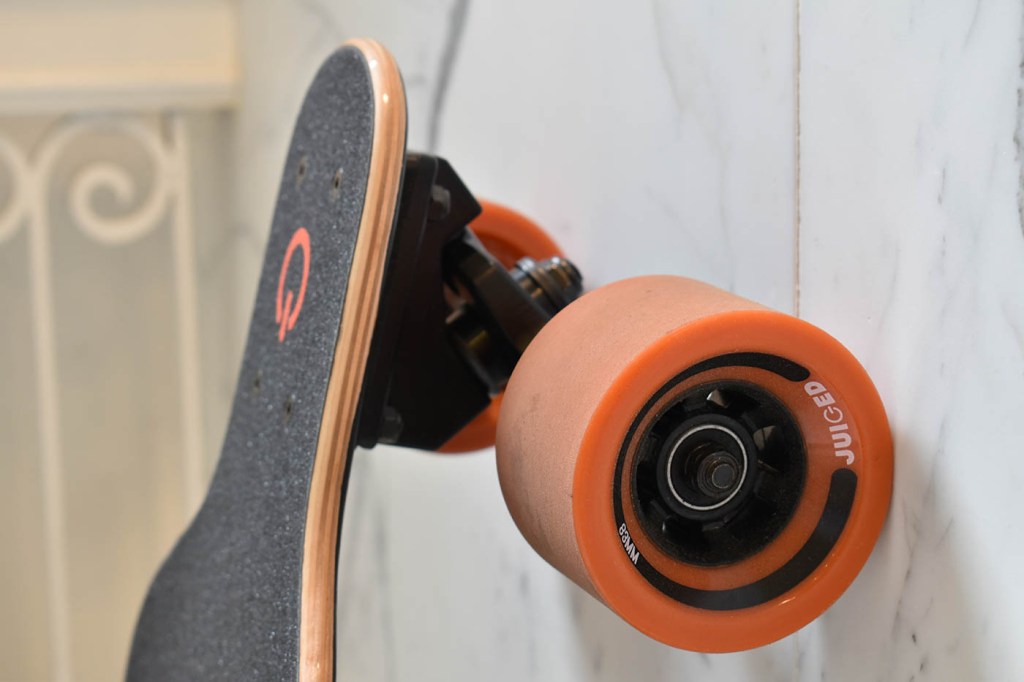

When it looks, feels and is packaged like a competitor’s, is it really competition or just a knockoff?
The Juiced Board comes dangerously close to echoing that sort of sentiment. Juiced and Boosted are words that loosely share the same meaning, but it’s the appearances where both electric skateboards really seem to converge.
Until now, I never would have recommended a sub-$1,000 electric skateboard. The cons for electric skateboards in this price range — including the Juiced — are lower build quality, performance and a less intuitive remote. This isn’t better than a Boosted or an Inboard.
But as long as you respect its limitations, it works well as an introduction to electric skateboarding.
The riding experience

The Juiced dual+ model contains the regenerative braking feature I’ve come to enjoy on the high-end boards. By slowing down, you begin the conversion of kinetic forces to energy that can charge the battery, even if only slightly to increase range. This “dual+” model has a seven-mile range before tanking out, with a top speed of 20mph and a 15 percent grade hill climb. Charge time is around 45 minutes, which is pretty solid.
However, one of my main gripes with the Juiced board is one that’s shared whenever I revisit these “off-brand” boards: the lack of rider confidence. Starting with the remote.

The remote is powered by two AAA batteries (while most others are rechargeable) and is very finicky. Want to gently slow to a stop from top speed? Expect a few heart-dropping jolts before you find the remote’s sweet spot.
To be sure, I took the Boosted board 2 dual+ along the same route from Spring Street and Lafayette to the office, which is a mile away. It’s a short sprint when averaging 20mph against cars on the city streets and bike lanes, but has enough turns, bends and obstacles to reflect a daily commute.

Subsequent trips around the area, where the roads were much less pristine and you were competing for road space made riding the Juiced board more of a risk than just having fun.
The lack of a full bamboo deck (the Juiced uses a maple/bamboo composite) means you’re less flexible in corners and can feel every imperfection on the road beneath you. However, it’s water-resistant, which is a plus.

I could go further in saying that the rigidity of the deck and trucks means you’re more stable at higher speeds, but when your braking power doesn’t instill confidence, you wouldn’t dare push the board that far. Or, you can always just bail.
Bottom Line

By not acknowledging the need for more competitive pricing, high-end board makers become the lords, and brands like Juiced take the role of the serf, rising against the pricing structure in many futile attempts to bring revolution. The Juiced board is the example of a serf that got close in an attempt to turn electric skateboards into a white-label market.
Meanwhile, Juiced is content with not having a cutting-edge take on electric skateboards, instead focusing on what would bring the best value.
If you can cater to the consumer who wants to experience a trend, but who doesn’t have northwards of $1,400 to spend on a toy — sorry, I meant a last mile vehicle — then you might succeed in making a few people happy. That’s a good thing.
Price as Reviewed: pre-order for $599 at Juiced Boards, shipping in August

